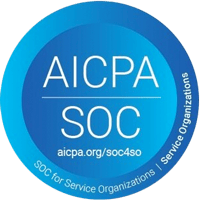When you’re hiring during a candidate shortage, it’s easy to get wrapped up in complicated recruiting strategies or expensive job ads. But sometimes, your ideal candidates are actually much closer to home. With an employee referral program, your current workers can be your best hiring assets. But what is an employee referral program? How do you set one up and what should you do if it isn’t working?
Let’s talk through it.
What Is an Employee Referral Program?
An employee referral program is any system you use to manage referred candidates.
Regardless of whether you have an employee referral program in place, your workers probably already mention your open roles to their job-seeking friends. Your referral program is just a way of standardizing this process. Typically, a referral program will include some kind of incentive to encourage employees to refer people in their network.
And candidate referrals really work. According to LinkedIn, almost half of all businesses say referrals are their best source for new hires.
Benefits of Employee Referrals for Assisted Living
Better Fit
On average, candidates who come through referrals are a better fit than candidates who apply on their own. If they’ve been referred by an existing employee, they probably already have a sense of your organization and whether they could perform core functions.
Employees who refer new hires are probably assessing these candidates before even sending them the job description. Referred candidates are often somewhat pre-vetted. Because they already have a connection to an employee, they will probably also have an easier time transitioning into your workplace.
In assisted living, finding the right fit is crucial. Your employees are vital members of your community, often acting as friends and confidantes to your residents. Best-fit candidates don’t just accept jobs faster; they help create an environment that residents want to be a part of.
More Likely to Accept an Offer
Since referred candidates have gone through a current employee, they probably already have some understanding of your work culture. If they’ve heard what it’s like to work at your organization and decided to go ahead and apply, there’s a better chance they’ll say yes to an offer. Glassdoor estimates that referred candidates are 2.6% – 6.6% more likely to accept a job.
Word of mouth is a powerful tool. People trust individual recommendations more than they trust ads. That goes for ads promoting goods, services, and professional opportunities.
Saving Time and Money
Employee referrals save time for your hiring team and money for your business. If your referrals are thriving, you can spend less on promoting job ads and new candidate channels.
Referral programs aren’t just an extra channel for applications. In many cases, they’re also cheaper, more efficient, and more successful. Candidates who come through referral programs don’t just apply on a whim. By the time they end up in your applicant tracking system, they’ve already learned about your business, decided they want to work there, and have been recommended by a potential coworker. That’s a lot of steps your recruiting team can skip.
Increased Retention Rates
Employees who are hired through a referral program tend to stick around longer than other new hires. This could be because they’ve got a head start on work friendships. Someone referred by a current worker (someone who has a personal stake in your company culture), is also probably a better culture fit to begin with.
Challenges of Employee Referrals
Here are some common challenges to employee referrals and how to troubleshoot them.
Employees Aren’t Motivated to Refer Candidates
What is an employee referral program without referrals? Here are a few things to try if you’re not getting enough referred candidates.
- Change your incentives. If monetary bonuses aren’t working, try offering other rewards: time off, a trip, or even tickets to a local event.
- Make it a contest. Pick a larger reward to offer the team who submits the most candidate referrals every month or quarter. Even employees who aren’t excited about incentives might be motivated by a little friendly competition.
- Remind employees about the program. One of the most common reasons referral programs fail is simply because employees don’t understand them or know they exist. Discuss your program at team meetings, hang flyers near the time clock or break room, and encourage employees to ask questions.
- Incentivize all referrals, not just successful ones. If you only reward employees for referring candidates who get hired, they might think the odds are too low to bother. Provide a reward to everyone who refers a qualified candidate, regardless of whether the candidate is hired.
- Improve your employee culture. Ultimately, no one wants to refer their friends to a business where they struggle to thrive. If you’re not getting referrals, it’s possible you first need to focus on creating a healthy company culture. Rewards systems don’t always work. Employees are more likely to refer candidates if they’re genuinely proud of their workplace.
Referring a Candidate Is too Complicated
If your referral process is complicated or confusing, employees might be discouraged from sending candidates your way.
Make it easy for workers to refer candidates with these tips.
- Emails employees a link to the job you’re trying to fill
- Write a simple explanation of your referral program that employees can forward to possible candidates
- Add a “Refer a Candidate” button to job posts so employees can instantly invite their contacts to apply
It’s Hard to Juggle Candidates From Multiple Channels
Manually managing candidates who came through unusual channels can be a challenge. Encourage referred candidates to apply through your regular job posts, rather than through an email. This way, you can manage all candidates from the same applicant tracking system.
To track referrals, include a field in your job application templates where applicants can mention who referred them.
How to Start an Employee Referral Program in Your Community
Here are the steps to beginning an employee referral program in your assisted living community, from the ground up.
- Get support. Make sure your leadership team is on board. Ensure that you will have the resources to continually reward employees who refer candidates.
- Pick your software. If your applicant tracking system doesn’t already integrate with your job boards, social media sites, and career pages, consider a solution that does.
- Settle on incentives. Pick rewards for employees. You could even solicit suggestions from your employees to get a sense of the rewards that would motivate them. One possibility is to consider multiple incentive options, including non-monetary rewards, so employees can choose the ones they want.
- Announce the program. Share the details of the program with employees. Make sure all workers have space to ask questions and be prepared to remind the team about it multiple times.
- Reward participants. Shine a light on the workers who refer candidates. Whether or not their referrals result in hires, thank them publicly and encourage their coworkers to follow their example.
- Share the program’s success. Take some time every month (or even every six months) to let your whole company know if employee referrals are succeeding. Thank everyone involved—it’s a true team effort!
Find Candidates With Apploi
Apploi’s talent management platform can help you attract, screen, and hire new candidates, no matter where they come from. Interested in learning more about how you can recruit, hire, and onboard healthcare staff quickly? Contact us today for a free demo of our end-to-end talent management solution.




